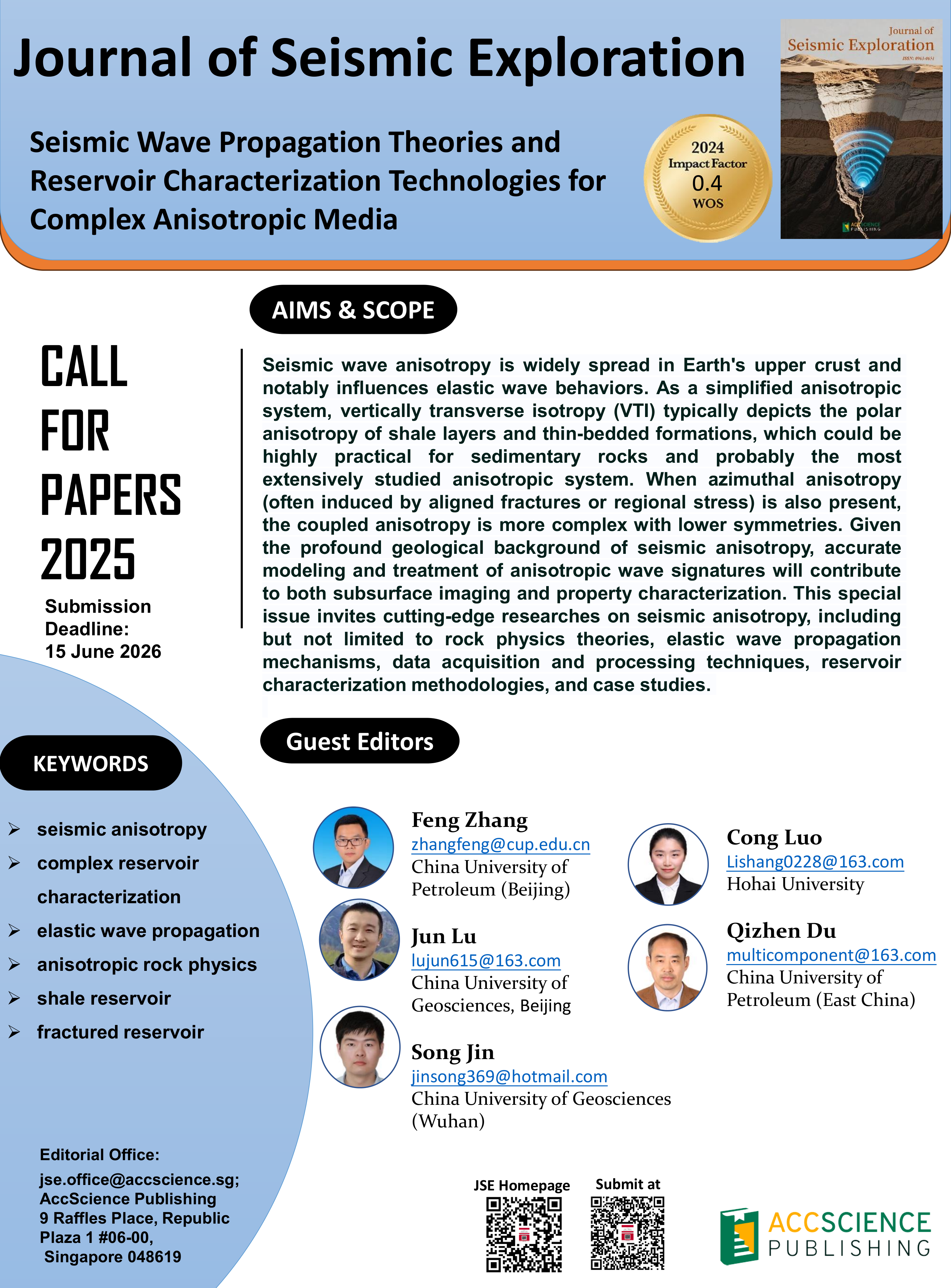Seismic Wave Propagation Theories and Reservoir Characterization Technologies for Complex Anisotropic Media

Dear Colleagues,
Seismic wave anisotropy is widely spread in Earth's upper crust and notably influences elastic wave behaviors. As a simplified anisotropic system, vertically transverse isotropy (VTI) typically depicts the polar anisotropy of shale layers and thin-bedded formations, which could be highly practical for sedimentary rocks and probably the most extensively studied anisotropic system. When azimuthal anisotropy (often induced by aligned fractures or regional stress) is also present, the coupled anisotropy is more complex with lower symmetries. Given the profound geological background of seismic anisotropy, accurate modeling and treatment of anisotropic wave signatures will contribute to both subsurface imaging and property characterization. This special issue invites cutting-edge researches on seismic anisotropy, including but not limited to rock physics theories, elastic wave propagation mechanisms, data acquisition and processing techniques, reservoir characterization methodologies, and case studies.
Professor Feng Zhang
Professor Jun Lu
Dr. Song Jin
Professor Cong Luo
Professor Qizhen Du
Guest Editors
Quantifying the effects of micro-cracks on velocity anisotropy in lacustrine shales with variable sedimentary structures
Joint PP- and PS-wave amplitude variation with angle inversion for thin interbeds







